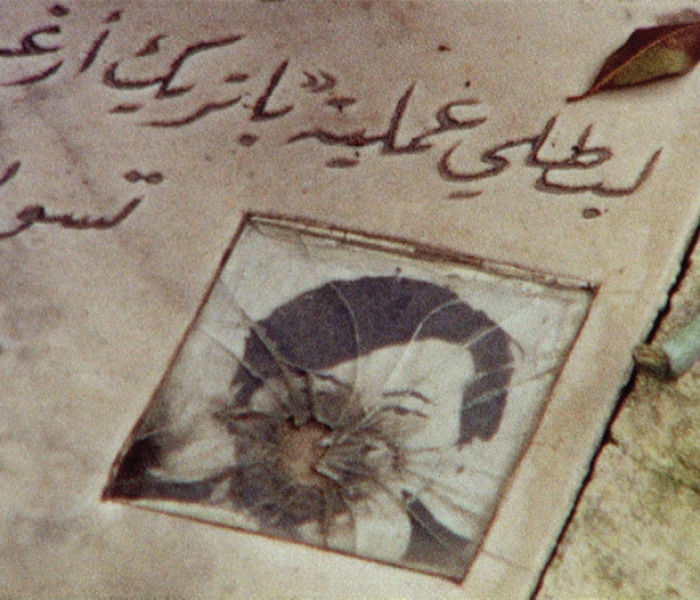
Click in the cinema / cinematic maps:
Ideas and drawings for the politics of place in cinema
The value of the cinema program 2023: Shima Bouali
introduction
The study of place and space is, in essence, an existential study of modernity. As migration, nation-building, and economic reconstruction increase, the implications of planning and spatial boundaries on the human psyche become more specific.
At the same time, since cinema is a product of modernity, images of place and space have had an impact on narratives and ideas. The photo became part of the official narrative of the place. It also brought to life crucial questions about the effects of objects and movement and their effects within those places. Literal and symbolic meanings were expressed in both linear and non-linear forms of cinematography.
As technology and urbanization advanced side by side, so did ownership, control, and class structure. It also moved towards more complex studies - sometimes marginal, but always revealing - of gendered spaces, border politics, and the right to a homeland. What are the reactions and effects that we see?
This cinema program aims to take viewers on a journey through an archipelago of spatial politics. It focuses, first, on the information, narratives, and images that our places provide. Through many cinematic forms and styles, we will look to history, planning, memory, economics and imagination to reveal the layers of politics that are situated within natural and built environments. We will also look at how cinema's dialogue with the scene, or even with the sense of the scene, was used in telling the story, and what this represents in the context of time, place and surroundings. Some films in cinemas will delve deeper into nation formation and national pride, as opposed to a spatial setting, for example. These films, both fictional and non-fictional, are ethnographic, informative, surreal and epic. We will look, more precisely, at how spaces - finite and infinite, imagined and real - define human experience and the individual's right to life, what they are intended for, and where their power lies.
The program is divided into several sections, each section consisting of films that inform/inform each other and question each other. These sections will overlap with each other, and some titles will be related to other sections. For example, Jocelyn Saab's stream-of-consciousness maps of the Lebanese Civil War, in her Beirut trilogy, express the same playful imagination as psychogeographers who explore urban environments and insist on people's personal connection to places. Recurring themes include walls of separation and borders, memory and forgetting, crime and urbanism. The selections are intended to encourage theoretical discussion, rather than educational filler. We will oscillate between two general types of films: objective documentary and suggestive cinema.
The first set of films begins with Urban Landscape Theory, a spatial cinematic theoretical concept that will reverberate throughout the programme. Originally developed by Masao Adachi, these narratives are told by visceral images of backgrounds and scenes. In these four films, the cinematography of Adachi and Eric Baudelaire, respectively, brings together the spectator and psychology behind recent murders to place them within the context of political atrocities dating back to a broader past. The next collection of films, Home for Syria, addresses the question of the right to one's own country through three very different documentaries about the Syrian migration crisis of the past decade: from the politics of planning, to the rush to reuse an abandoned airport, to existential questions about borders. These three films raise questions about our right to a homeland as human beings, who sets such policies, and what are the results. As we delve deeper into the right to a homeland, we see the consequences of urbanization and the threats of dislocation within the city. The City Divides group looks at the role of the real estate economy in reinforcing the class divide from different angles. The Cities of Salt group focuses on the city itself with four films that address the hidden forces that build cities. Economics and geopolitics are the forces that move populations, dictate their way of life, and build and break their cities. The Psychogeography section brings us to a playful area of imagination, cities, and politics. Collective expulsion is presented in a film through a psychological map and a poetic fusion of history and imagination. The Spaces of Resistance collection includes three films that deal with politically prohibited areas, creating a space for a united and renewed people. A people we witness, through images of the scenes that surround them, what their will is, how it is portrayed, and the words they use to narrate the situations surrounding them.
The program invites you to take a look at the countless combinations that spaces and cinema can take, the dialogues that take place between the two parties, their policies, and the human feelings and facts they present.
Cinema programme
The cinema program aims to take viewers on a journey through an archipelago of spatial politics. It focuses, first, on the information, narratives, and images that our places provide. Through many cinematic forms and styles, we will look at history, planning, memory, economics and imagination, to reveal the layers of politics that are situated within natural and innovative environments. We will also look at how cinema's dialogue with the scene, or even with the feeling of the scene, was used in telling the story, and what that represents in the context of time, place, and surroundings. Some films in cinemas will delve into nation formation and national belonging, as opposed to spatial frameworks, for example. These films, both fictional and non-fictional, are ethnographic, informative, surreal and epic. We will look, more precisely, at how spaces - finite and infinite, imagined and real - define human experience and the individual's right to life, what they are intended for, and where their power lies.







